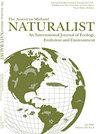原生松稀树草原地表微生境对长叶松供种的影响
IF 0.6
4区 环境科学与生态学
Q4 Agricultural and Biological Sciences
引用次数: 5
摘要
摘要在全球范围内,稀树草原树木在招聘方面遇到瓶颈。幼体,尤其是非克隆的、重新分类的物种,存活下来并达到能够在反复发生的火灾中幸存的大小的可能性很低。我们假设,如果热带草原内的底层植被包含火灾影响减少的斑块,幼树在火灾中幸存的可能性会增加。我们根据对北美东南部一片古老的松草原的实地研究完善了我们的一般假设,其中长叶松(Pinus palustris Mill.)是最丰富的树木。我们假设,在三个底层微栖息地(倒下的松树树冠内、松树树桩周围和橡树/硬木茎的内部),松树进入耐火“草期”的可能性可能比在远离过度生长的松树的周围地被植物中更大。我们测量了这三个微生境的复制斑块中的地块和周围的底层基质中的底层植被的组成和丰度,以及长叶松的未成年草期(<1.5 m高),所有这些都位于远离大树的地方。三个微生境内部的底层植被不如外部丰富,不同微生境之间的草和灌木丰度不同。零膨胀泊松模型表明,草期长叶松在三个微生境中发生的可能性是周围底层基质中的5倍以上。松树比橡树/硬木的微生境更有可能被招募。我们认为,微栖息地的改变,特别是大型长叶松死亡产生的微栖息地,可能有助于这种重新播种的稀树草原树木的种群。本文章由计算机程序翻译,如有差异,请以英文原文为准。
Ground Layer Microhabitats Influence Recruitment of Longleaf Pine in an Old-growth Pine Savanna
Abstract. Globally, savanna trees experience bottlenecks to recruitment. Likelihoods are low that juveniles, especially of nonclonal, reseeder species, will survive and reach sizes that survive recurrent fires. We hypothesized if ground layer vegetation within savannas contained patches with reduced fire effects, likelihoods of juvenile trees surviving fires would be increased. We refined our general hypothesis based on a field study in an old-growth southeastern pine savanna of North America, in which longleaf pine (Pinus palustris Mill.) is the most abundant tree. We hypothesized that recruitment of pines into the fire-resistant ‘grass stage’ may be more likely in three ground layer microhabitats (inside crowns of fallen pines, around pine tree stumps, and inside patches of oak/hardwood stems) than in surrounding groundcover located away from overstory pines. We measured the composition and abundance of ground layer vegetation and censused juvenile grass stages (< 1.5 m height) of longleaf pine in plots in replicated patches of these three microhabitats and in the surrounding ground layer matrix, all located away from large trees. Ground layer vegetation was less abundant inside than outside the three microhabitats and abundances of grasses and shrubs differed among microhabitats. A zero-inflated Poisson model indicated that occurrence of grass stage longleaf pines was >5 times more likely inside the three microhabitats than in the surrounding ground layer matrix. Recruitment was also more likely in pine than oak/hardwood microhabitats. We propose that altered microhabitats, especially those generated by death of large longleaf pines, likely facilitate recruitment into populations of this reseeding savanna tree.
求助全文
通过发布文献求助,成功后即可免费获取论文全文。
去求助
来源期刊

American Midland Naturalist
环境科学-生态学
CiteScore
1.20
自引率
0.00%
发文量
38
审稿时长
18-36 weeks
期刊介绍:
The American Midland Naturalist has been published for 90 years by the University of Notre Dame. The connotations of Midland and Naturalist have broadened and its geographic coverage now includes North America with occasional articles from other continents. The old image of naturalist has changed and the journal publishes what Charles Elton aptly termed "scientific natural history" including field and experimental biology. Its significance and breadth of coverage are evident in that the American Midland Naturalist is among the most frequently cited journals in publications on ecology, mammalogy, herpetology, ornithology, ichthyology, parasitology, aquatic and invertebrate biology and other biological disciplines.
 求助内容:
求助内容: 应助结果提醒方式:
应助结果提醒方式:


